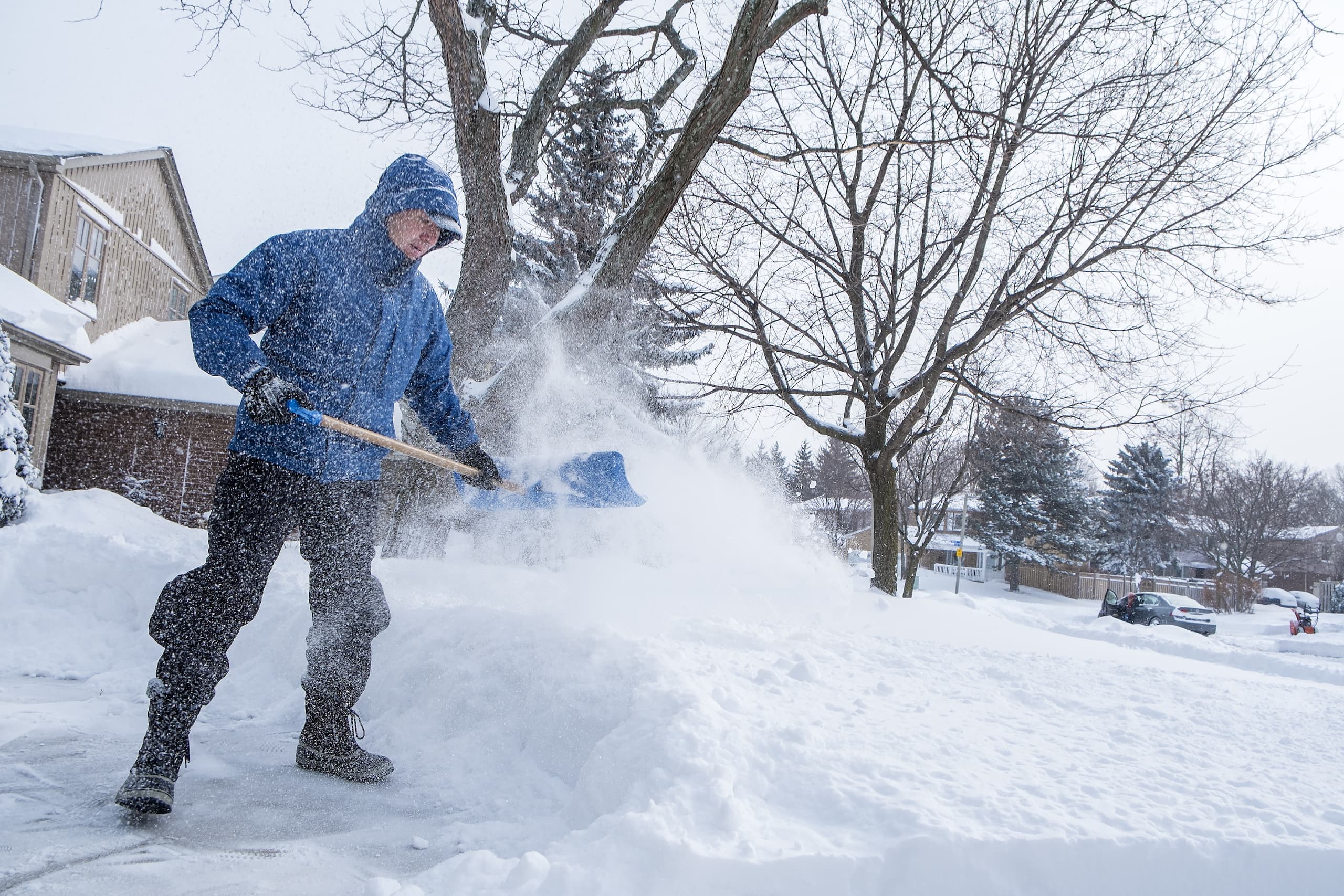As the temperature outside starts dropping and snow comes into the forecast, the back-breaking work associated with it comes flurrying in. Snow is beautiful to look at and most people enjoy a good snow on the occasion. If only everyone could stay snuggled under blankets inside with a mug of hot chocolate taking in the beauty falling from the sky. However, it is often necessary to battle snowy conditions and shovelling snow off sidewalks and walkways can be strenuous and hard on the body. Fortunately, we are happy to share some easy tips to prevent injuries while shovelling snow.
Common Injuries
Shovelling snow is a full body workout. Therefore, there is a lot of potential for injury. Some of the common orthopedic injuries that can occur are:
- Back injury
- Neck injury
- Rotator Cuff Strain
- Hamstring Strain
- Knee pain
Prevention
The best medicine is prevention. If you can prevent an injury before it happens, that is always better than having to rehabilitate. In order to decrease your chances of injuring yourself while shovelling snow, here are three easy to follow tips:
-
Warm-up and stretch before beginning
As we stated previously, shovelling snow is an intense full body workout. You wouldn’t just wake up and immediately leave to run several miles or do a Crossfit workout without warming-up and stretching would you? No, so that’s why a light warm-up is a great place to start. Walk for a little bit around your house and do some easy stretches for your shoulders, neck, back and legs before donning your snow gear to tackle the sidewalks.
-
Good posture and engaged core
Repetitive twisting motions can wreak havoc on the back. Keeping your feet stationary, slumping over, and just twisting at the waist to toss snow off the walkway can be a back injury in the making. Tighten your core muscles as you work and use your legs to pivot rather than twist.
-
Rest breaks
Any time muscles that haven’t been worked in a while are subjected to long bouts of repeated movements, an injury could be on the horizon. Be sure to take frequent rest breaks to reduce the risk of muscle and joint pain.
Listen to the Podcast
Richard Bourassa joins Brent Loucks on 650 CKOM to talk about risks, injuries and treatment of injuries caused by snow shovelling. Listen here!
What Happens if I do get Injured?
Unfortunately, not all injuries can be prevented. When you are needing to get back to work, taking care of loved ones, or your weekend warrior activities, you do not want to stay down for long. Venture Rehabilitation Sciences Group can evaluate your injury and set you up with the right treatment plan to get you back to the things you enjoy. Our university-trained therapists use skilled manual techniques, modalities, and individualized exercise plans to get you back on your feet. Do not let a snow shovelling injury keep you down. Contact Venture Rehab today! We offer same-day appointments and are happy to aid you in your recovery.
